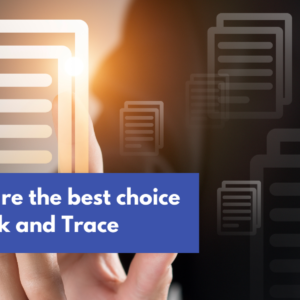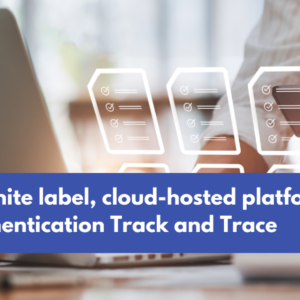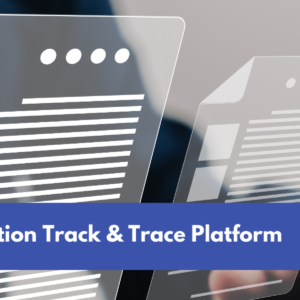This is the fourth blog post for NanoMatriX’s Pharma Track-and-Trace Series.
Implementation of traceability systems has long been a challenge for many institutions. Governments and pharmaceutical companies have long been fighting the anticounterfeit war to prevent the infiltration of false or substandard products in the supply chain.
Successful working of a pharma track-and-trace system can help in,
- real-time tracking of the logistics network
- management and detection of stock-outs
- product recalls
- reduction of reimbursement frauds.
So far, the process has proved itself to be a very complex one.
However, with the right approach and resources, the implementation of an effective pharma track-and-trace system is quite possible. An example would be Turkey. All medicines sold in Turkey are equipped with a DataMatrix code, a two-dimensional readable barcode. It contains information on the Global Trade Item Number, serial number, expiration date, and batch number, which helps in the history and location tracking of each medicine through the supply chain.
Below, we break down the key factors that can help an institution kick-start traceability systems and ensure quality product distribution.
1. Alignment of Stakeholders’ Motives
Whether it is a pharmaceutical company or a government planning to implement nationwide pharma track-and-trace systems, decision-makers need to have a shared motive to prevent substandard products from entering the market.
Differences in the opinions of stakeholders and key players on matters of upfront payment, sharing data on centralized databases, benefiting from gaps in the supply chain, fragmentation of the reimbursement landscape, and preferences of software and technology can cause significant delays in the successful working of these systems.
Turkey, the first country in the world to succeed in putting a pharma track-and-trace system into practice, achieved this milestone through a shared stakeholders’ incentive. The government was willing to be adaptive and supported flexible solutions.
Similarly, in smaller settings like pharmaceutical companies, various key players need to have a shared vision to seamlessly install a track-and-trace solution.
2. Industry Incentives
Including industries and departments that can help implement the pharma track-and-trace system is a sure way to the success of traceability systems.
Governments should collaborate with pharmaceutical companies, manufacturers, distributors, and traceability service providers to foster strong partnerships. The shared incentives can also be tied to accurate data reporting and compliance.
On the other hand, pharmaceutical companies should also team up with traceability service providers to regulate the supply chain, monitor warehouses, and keep a check on market products for recall and return, effectively denying any chance of counterfeit or false products entering the network.
3. Reimbursement Linked to Verified Dispensing:
Dispensing pharmaceutical products through verified outlets should be the only means for reimbursement. This has been a prime factor in the success of track-and-trace systems in Turkey.
Some companies consider dispensing their products online, besides the traditional outlets to avoid the costs of bulk shipping and delays due to stock shortages. However, despite selling through an official website with a registered company logo, online mediums still pose a threat as patients might buy unverified products from counterfeit websites.
There are also chances of consuming falsified products due to consumer unawareness, the appeal of cheaper options, or the unavailability of certain products nearby.
Hence reimbursement should only be linked to dispensing through verified and registered means. This compounds the success of traceability systems for both pharmaceutical companies and governments.
4. Flexible Implementation
A good pharma track-and-trace system will likely take a lot of time.
Planning, alignment of incentives and regulatory requirements, implementation, training and testing, solving problems related to the system, etc demands patience and a flexible mindset for frictionless working and integration with existing systems.
However, the quality of pharmaceutical goods should also be on par with the system to ensure maximum consumer safety and benefit.
Conclusion
Successful implementation of a pharma track-and-trace system can enhance real-time logistics tracking, stock-out management, product recalls, and reduce reimbursement fraud. Despite its complexity, with the right approach and resources, effective traceability systems are achievable.
With NanoMatriX, you get a pharma track-and-trace system that is sure to succeed in preventing threats related to false products. Our cutting-edge technology is secure, scalable, and integrates smoothly with your systems.
Read the fifth blog post for NanoMatriX’s Pharma Track-and-Trace Series here.
About NanoMatriX Technologies Limited
NanoMatriX is a specialist in providing document and brand protection solutions. To solve our customer’s problems, we provide the following product and service categories:
- Brand-/document protection platforms
- Custom Software development
- Cybersecurity services
- Anti-counterfeiting products
- Consulting services
The competitive advantages of NanoMatriX are:
- Two decades of experience helping brand owners and government agencies fight product and document crime worldwide.
- A unique combination of rare-to-find skills in linking physical overt, covert, and forensic security features with secure digital features.
- Proven rigorous application of top cyber security and data privacy protection standards.
- Multi-lingual, multi-cultural, and collaborative corporate culture.
NanoMatriX Technologies Limited is committed to the highest standards of cyber security, data privacy protection, and quality management. Our systems are certified and compliant with leading international standards, including:
- ISO 27001: Ensuring robust Information Security Management Systems (ISMS).
- ISO 27701: Upholding Privacy Information Management Systems (PIMS) for effective data privacy.
- ISO 27017: Implementing ISMS for cloud-hosted systems, ensuring cybersecurity in cloud environments.
- ISO 27018: Adhering to PIMS for cloud-hosted systems, emphasizing privacy in cloud-hosted services.
- ISO 9001: Demonstrating our commitment to Quality Management Systems and delivering high-quality solutions.












Recent Comments